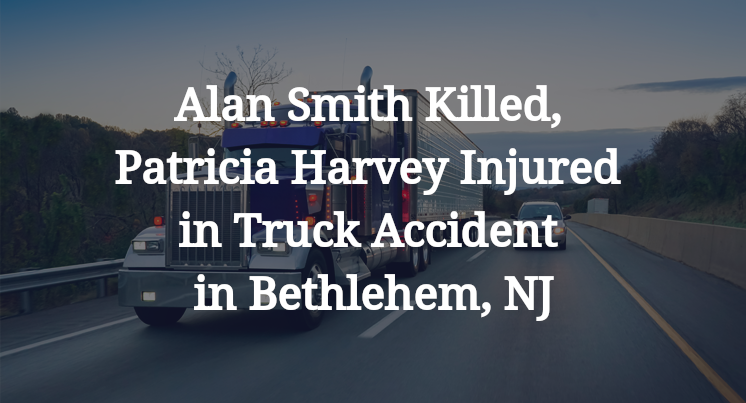Alan Smith Killed, Patricia Harvey Injured in Truck Accident in Bethlehem, NJ
Bethlehem, NJ — April 6, 2025, Alan Smith was killed and Patricia Harvey was injured in a truck accident at about 4:45 p.m. on eastbound Interstate 78.
Authorities said an unknown vehicle collided with Ford F-150 towing a camper and another vehicle, knocking it into a Peterbilt semi-truck that was parked on the shoulder near mile marker 7.8. The other vehicle continued traveling east after the crash.

Ford driver Allan Smith, 78, died at the scene of the crash, while passenger Patricia Harvey, 78, was flown to a local hospital for treatment of serious injuries, according to authorities.
Authorities have not released any additional information about the crash. The accident is still being investigated.
Commentary
When a chain reaction crash ends with a vehicle slamming into a parked semi on the shoulder of a highway, it’s easy to focus on the vehicle that caused the initial impact, and that driver absolutely needs to be found and held accountable. But from a legal standpoint, there’s another question that can’t be overlooked: Was the semi-truck parked safely and legally in the first place?
According to reports, an unknown vehicle struck a Ford F-150 towing a camper, which then collided with a Peterbilt semi parked on the shoulder. The driver of the Ford died, and his passenger was seriously injured. While the hit-and-run driver certainly set the events in motion, that doesn’t automatically absolve others involved if there were additional safety failures along the way.
Under federal regulations and general highway safety standards, the shoulder is not a designated parking spot unless a vehicle is experiencing an emergency. If the semi-truck was stopped for a mechanical failure or other urgent reason, the driver should have activated hazard lights and placed reflective warning triangles or flares behind the truck, especially on a high-speed roadway like I-78. If none of those precautions were taken, then the truck may have created a deadly hazard, even while technically off the roadway.
That’s why it’s essential for investigators to determine why the truck was parked there and how visible it was to oncoming traffic. Was it a breakdown? A driver taking a break? Something else? These aren’t minor details. They go directly to whether the truck’s presence on the shoulder contributed to the severity of the crash.
On the other side of the equation, the search for the hit-and-run driver has to be a top priority. That driver set off the entire chain of events, and fleeing the scene of a crash involving death and serious injury is a felony in most jurisdictions. Law enforcement will likely be checking traffic cameras, vehicle debris and witness statements to identify the missing vehicle. But even if that person is found, it doesn’t automatically mean they’re the only one responsible.
This crash is a powerful reminder that highway shoulders are not safe zones. Any vehicle stopped there — especially a large commercial truck — must follow strict safety protocols. Because when things go wrong, it’s often not just one decision that causes the harm, but a series of failures that line up in the worst possible way. And until every contributing factor is investigated and understood, the risk of this kind of crash happening again remains unacceptably high.

“These are essential reads for anyone dealing with the aftermath of a truck wreck”– Attorney Cory Carlson